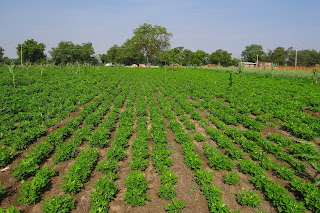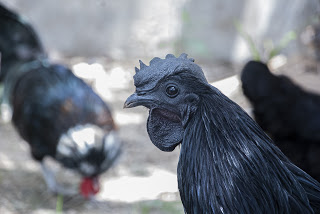Cultivation Of Groundnut In India
The Groundnut comes from a family known as 'Leguminosae', and its botanical name is 'Arachis Hypogea .L' it is derived from a Greek word Arachis means "legume" and "Hypogea" means ground which in turn mean the formation of pods in the soil.
Groundnut is also known as a peanut in some parts of the World and was first introduced by the Missionaries in the early part of 16th Century from that day onwards the Groundnut has played an important role in household of every Indian.
It is one of the most important oilseeds which takes limited resource to cultivate, the Groundnut is grown in India in about 50% of area and grown in about 90% lakh hectares, it is largely grown in Karnataka, Tamilnadu, Andhra Pradesh, Maharastra, Orissa, Punjab and Gujarat. Some reports say that Tamilnadu produces the maximum number of Groundnut in the Country.
The Crop of Ground can be grown along with Maize, Cotton, Millet, Pearl etc and it can be grown in rotation with Barley, Wheat, Gram etc.,
Cultivation Of Groundnut In India
Land Preparation
The land has to be slightly plough about 3 to 4 times, the Groundnut shall grow healthier in a loose sandy loom soil and PH level of the Soil should be in and around 5.5 to 7.5.
The Groundnut is grown in 4 seasons in India mainly Kharif, Rabi, Spring and Summer, it is mainly grown in Kharif season.
The Selection of seed is important for growing a healthier crop, Damaged, small and broken seeds should not be used for sowing, for sowing Bold and filled Pod should be selected.
To control the disease of Seeds disinfectant Thiram is treated to the seeds and it can be used 3 gram per kg of seeds with the mixture of Rhibozium before it is sowed.
Usually, Sowing of Seed is done in the rainy season especially during Monsoon, if the sowing is done before the monsoon the germination takes place early and the rain helps the crop to grow in faster Phase, if the irrigation facilities are available the crop can be grown after Monsoon.
How Sowing Is Done
The Fertilizers is important for the growth of the plant, Phosphorus is the main fertilizer which is used to apply in the side and below the seeds with a distance of about 4 to 5 Cms. The Powdered gypsum is used after 25 days of sowing and it is applied at the base of the Plant. The importance of gypsum is that it helps in the development of Pods.
The Calcium is also another important mineral which helps in the Groundnut Production.
The Groundnut Seeds are sowed in about 5 to 6 Cm deep with the help of plough or seed drill, Seed dibbling is done by keeping a distance of about 50 to 60 Cms in row and distance of 10 Cms between Plants, this method helps the crop to grow healthier.
Importance Of Irrigation
Irrigation is one of the important sources in the growth of the Plant, irrigation is crucial when there is no abundant rain available and during dry periods, irrigation becomes more important during the plant stages such as Flowering, peg formation and development of Pod. The irrigation should be provided to the Plants in 15 days of interval time. The best possible irrigation for growing Groundnut is Sprinkler irrigation.
Plant Protection
1. The Protection of the Groundnut Plant from Weeding is very important as it can make yielding production less which can up to 25% to 30%, Weed can be developed within 40 to 45 days after sowing of Groundnut seed and control of Weed is essential and can be done through manual or by applying chemicals.
2. The Protection of Plant from insects is also very crucial, Pests such as White Grub, Army Warm, Leaf miner, Aphids, Whiteflies etc., can cause Production of yielding to low, these can be controlled by pesticides such as Chloropriphos or Quinolphos.
3. The Protection of Groundnut from disease is also very important and disease include Stem rot, Rust, Tikka and leaf spot, these diseases can be controlled by spraying insecticides such as Mancozeb and Carbendazim.
Groundnut Harvesting
The harvesting of Groundnut is done when the older leaves fell off from the Plant or when the foliage turns to yellow or when the shells turn to dark in colour or when Pod becomes harder or seed coat showing the change in colour such as red or pink.
The Groundnut harvest is done by pulling the plant from the soil and by blade harrow attached to tractors that cut the roots of a plant which is below the surface of the soil.
Uses
1. The Groundnut is rich in Proteins, and its Kernels are consumed and they are rich in Calories.
2. Oil is produced from the Crop which is important for diet and Oil is used for generating Vegetable Ghee.
3. Groundnut is used for fodder, used in Biofertilizers and its Shell is used as Fuel.
4. Groundnut is used in Confectionaries.








No comments
New comments are not allowed.